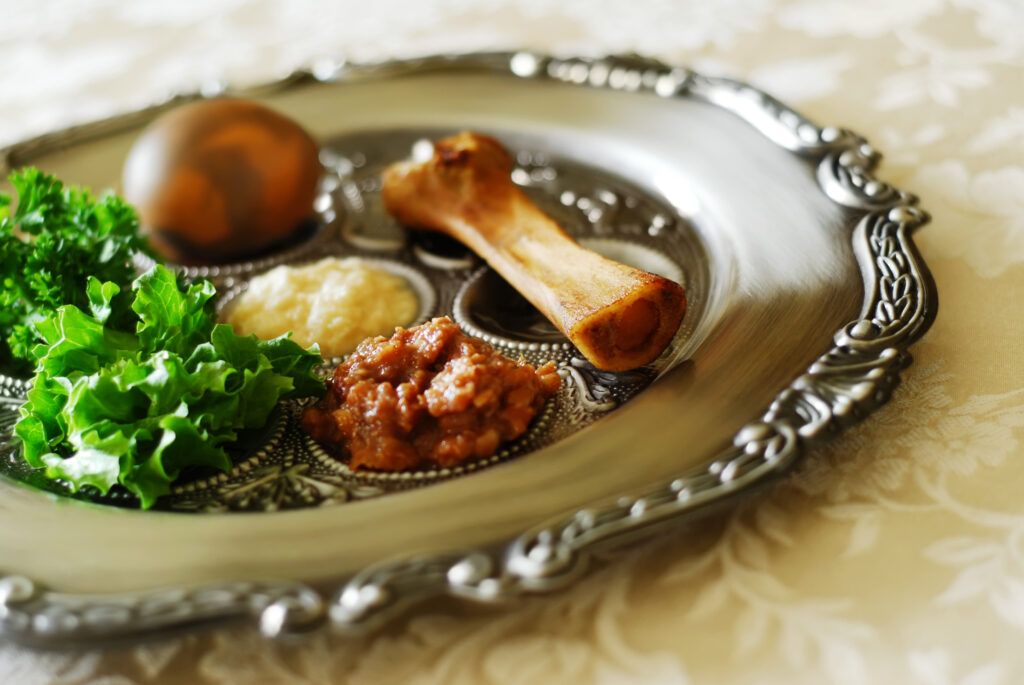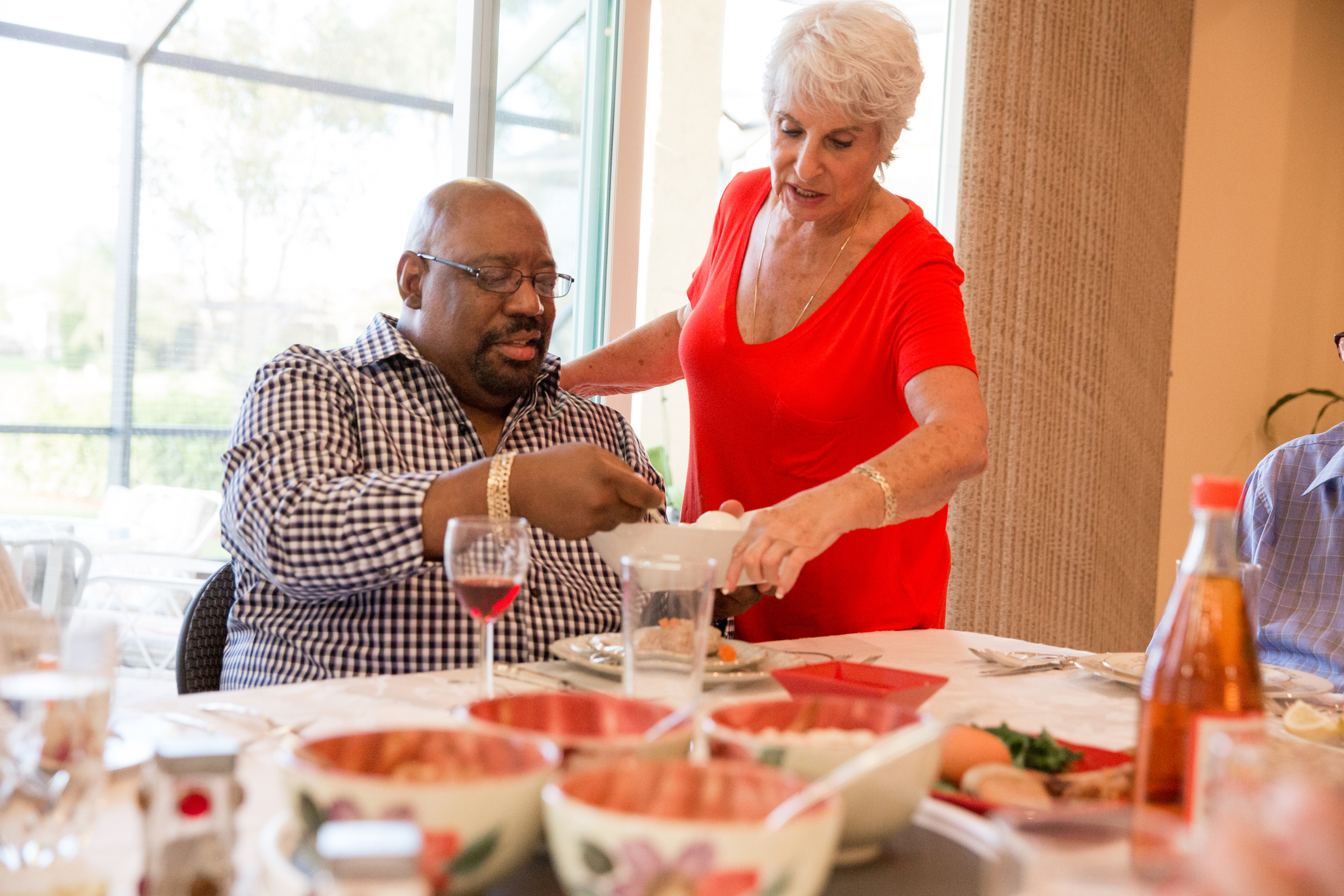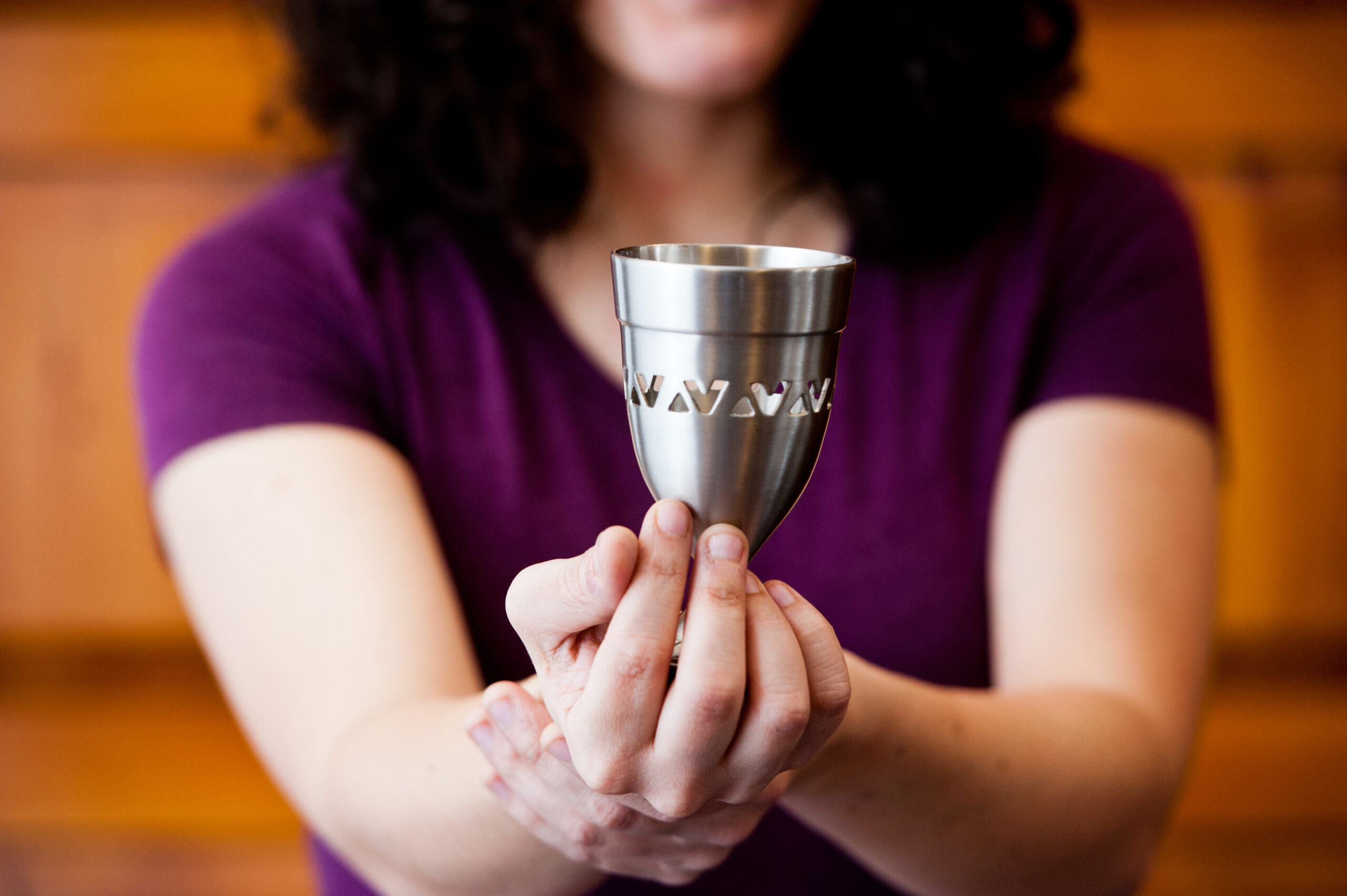Pesakh’s blue plate,
special, a strange
and yet familiar
gathering of ingredients,
recipe for remembrance,
symbols of celebration,
subject of cerebration,
centerpiece of our
meal of liberation …
Haroset (apples, cinnamon and wine)
Our taste buds
are confused. Spiced
and wine-soaked,
the sweet fruit,
riches of the
earthly garden
with which we
have been entrusted,
chopped and crushed,
cements the bricks
of our forgetfulness.
Betraying nature, we
betray our own
true natures—build
Pharaoh’s palaces and
storehouses, prisons for
Earth’s bounty, monuments
to greed, mortared with
forgetfulness and ignorance.
How did we
agreed to this
betrayal? How are
we complicit in
this intolerable injustice?
Karpas, Hazeret (sweet and bitter greens)
Spring greens tantalize
with new life
yet taste bitter
when we have
forgotten how to
love, how to
nourish, how to
protect the birth
and growth given
us to nurture.
Then newness, joy
and bitterness, mingle
in one mouthful,
blessed and rueful,
chewed and seasoned
with remorseful tears.
Maror (bitter herbs)
Fiery root sears
the knowing of
how far we
have strayed from
Truth into our
very breath, like
a dry khamsin,
hot desert wind
filling nostrils, throats
with dust and
despair. How
many years, how
many incarnations before
we recognize the
thrall that binds
us all, master
and slave, in
the tight fist
of bondage? How
many millennia before
we will perceive
why we came
and what it
means to serve?
Zeroa (roasted lamb shank)
It begins in
the bones, a
glimmer of freedom,
a deep groan—
where have we
been? In what
dark cave immured?
Only when the
darkest of darks
descends do we
begin to know
our own souls’
blindness. Only then,
forced at last
to kill and
burn and gnaw
to the bone
the false gods
we have worshipped
do we begin
to taste the
savor of truth,
lost long ago—
if ever known.
Only when we
have eaten the
flesh of the
outstretched forearm, God’s
shank, does the
journey home begin.
Beitzah (roasted egg)
Egg, round, white,
like the pregnant
moon of spring,
swelling full before
our delighted eyes,
pointing us toward
the possible, the
dreamed-for, prayed-
for newness, always
present, just behind
the veil, just
beneath the shell.
Is it greed
or fear or
soul’s deep grief
that compels us
to roast this
seed, to cook
the unborn, before
its growth and
birthing can occur?
Orange
Another round of
possibility, this time
not gestation, but
the fruit, juicy,
sweet and tart,
inviting all: Let
all who are
hungry come and
eat! All who
seek life’s fullness,
all who long
for the circle’s
wholeness! Together let’s
circumambulate the periphery
of this pregnant
space, upwelling with
the holiness of
“between,” Oneness arising
from the midst
of our colorful
assemblage, ever expanding
to include another
and another. We
celebrate this seventh
ingredient in our
seder soup—the
flavor that at
last completes Creation.













